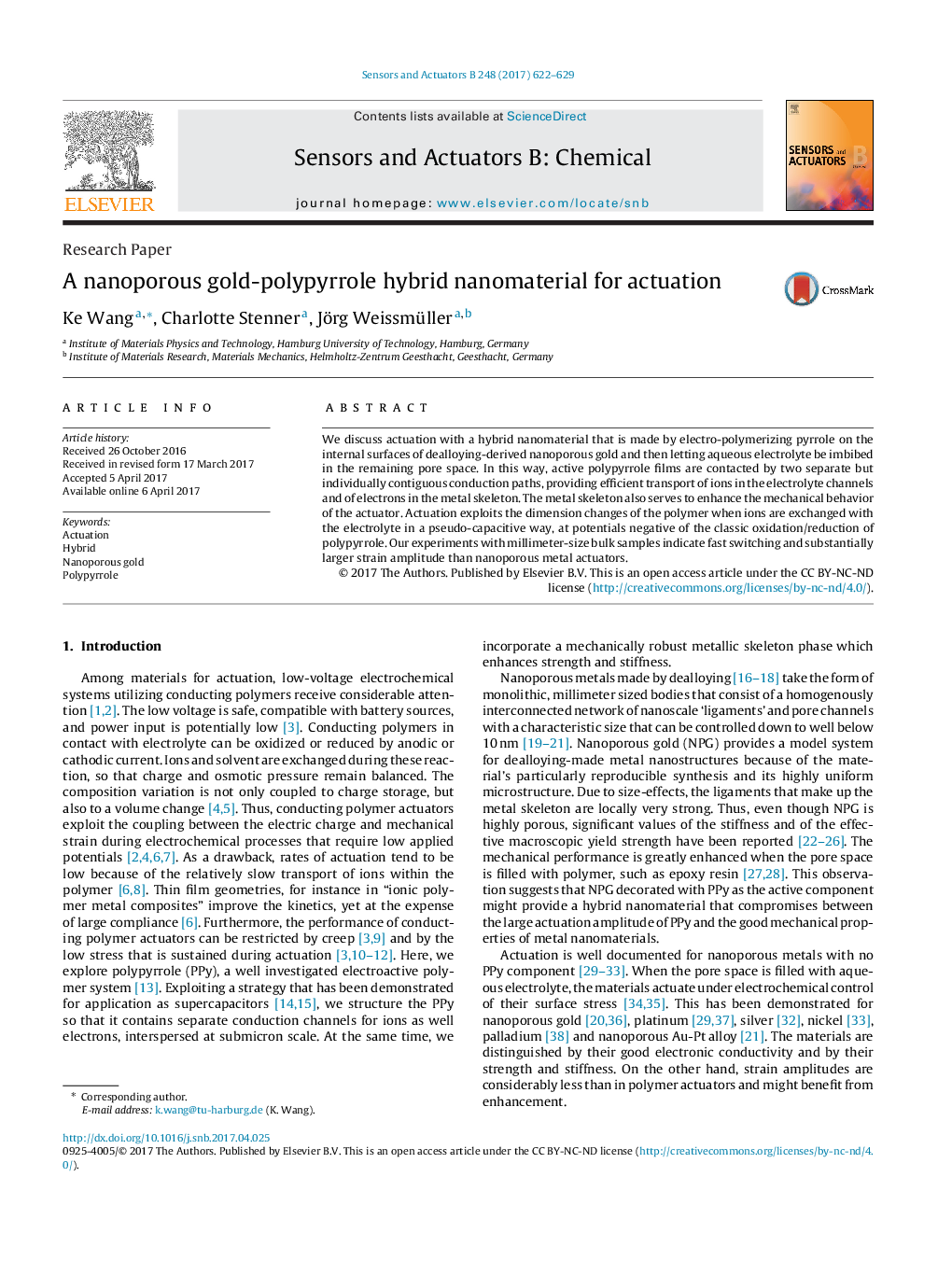| Article ID | Journal | Published Year | Pages | File Type |
|---|---|---|---|---|
| 5009221 | Sensors and Actuators B: Chemical | 2017 | 8 Pages |
â¢Our novel hybrid nanomaterial is designed for efficient and fast actuation, even in a macroscopic 3D geometry, and for enhanced mechanical performance.â¢The mechanically strong and electron-conductive skeleton phase is nanoporous gold, while the ionÂconductive channels contain aqueous electrolyte.â¢Polypyrrole layers couple the two channels long the internal interface.â¢Surprisingly, we find the most significant actuation in a regime of nonspecific ion incorporation into the PPy, and not in the regime of oxidation/reduction.
We discuss actuation with a hybrid nanomaterial that is made by electro-polymerizing pyrrole on the internal surfaces of dealloying-derived nanoporous gold and then letting aqueous electrolyte be imbibed in the remaining pore space. In this way, active polypyrrole films are contacted by two separate but individually contiguous conduction paths, providing efficient transport of ions in the electrolyte channels and of electrons in the metal skeleton. The metal skeleton also serves to enhance the mechanical behavior of the actuator. Actuation exploits the dimension changes of the polymer when ions are exchanged with the electrolyte in a pseudo-capacitive way, at potentials negative of the classic oxidation/reduction of polypyrrole. Our experiments with millimeter-size bulk samples indicate fast switching and substantially larger strain amplitude than nanoporous metal actuators.
